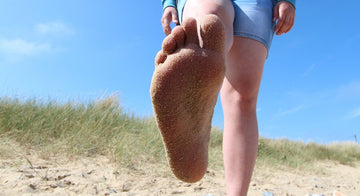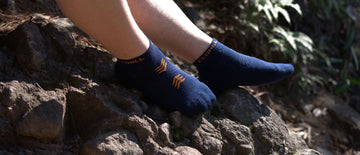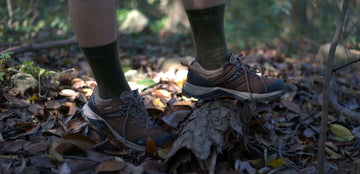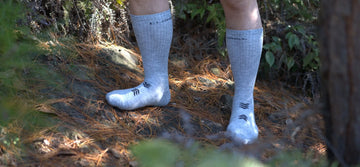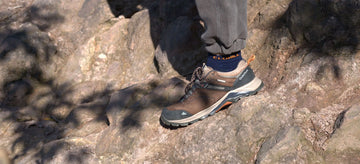There are a lot of things to consider when you're outdoors on a hiking adventure or running a marathon. But preventing blisters on your feet is one thing that the majority of sports enthusiasts should not overlook. If you're about to play a long-distance or high-intensity sport, prevent blisters before they appear.
How to prevent blisters on your feet
No one wants blisters on their feet while hiking or running, and you can prevent them by following a few simple tips.
1. Protect your feet: To prevent blisters, you'll want to choose anti blister socks with excellent breathability and moisture-wicking properties, such as alpaca or Coolmax. Socks made of these materials can quickly wick away sweat and keep your feet dry and fresh. In addition, socks should not be too tight or too loose to ensure a good fit.
2. Try anti-friction products at the right time: Before exercising, apply talcum powder, anti-friction cream or anti-friction patches to the areas that are prone to friction, which will help to minimize friction and reduce the risk of skin damage.
3. Rotate regularly: Rotate your socks and shoes regularly. This prevents bacteria and moisture from collecting and reduces the risk of skin infections.
4. Reasonable rest: Prolonged exercise increases pressure on the feet and lowers immunity. Properly scheduled rest can reduce friction from excessive exercise, give your feet time to relax, and reduce the risk of blisters.
What to do when blisters appear on your feet
When a blister appears, be patient and watch it; most blisters will heal on their own in the next one to two weeks. Here are some do's and don'ts and countermeasures that Clohill has compiled:
-
Keep it clean: It's important to keep your feet fresh. Wash the blisters with warm water and mild soap and gently drain them afterward, avoiding hard rubbing.
-
Determine whether treatment is needed: If the blister is intact and there is no obvious physical discomfort, it is recommended not to puncture the blister. If the blister bursts and causes severe pain, puncture or further treatment should be considered.
-
Proper treatment of blisters: If the blister needs to be punctured, sterilize the needle with alcohol, make small holes around the edge of the blister to allow the fluid to drain out, avoid removing the entire skin of the blister, rinse and dry the blister, apply a proper amount of petroleum jelly to the wound, and wrap the foot with sterile gauze.
- Anti-friction measures: After wrapping the foot, it is recommended to wear well-fitting, padded shoes and socks to minimize the pain caused by friction.
Important note
If the blister area becomes infected (e.g. persistent redness, pus, or pain), please contact your doctor or go to the hospital.
Bonus tip: Upgrade your Clohill performance anti blister socks to enhance your performance.
Upgrade to Clohill performance anti blister socks to enhance your next adventure. These socks have excellent moisture wicking, blister-proof characteristics and are made from naturally breathable alpaca wool, combined with modern textile technology and anti-friction technology to minimize chafing, promote air circulation, and reduce the risk of blisters when you're out in the harsh hiking environment.

